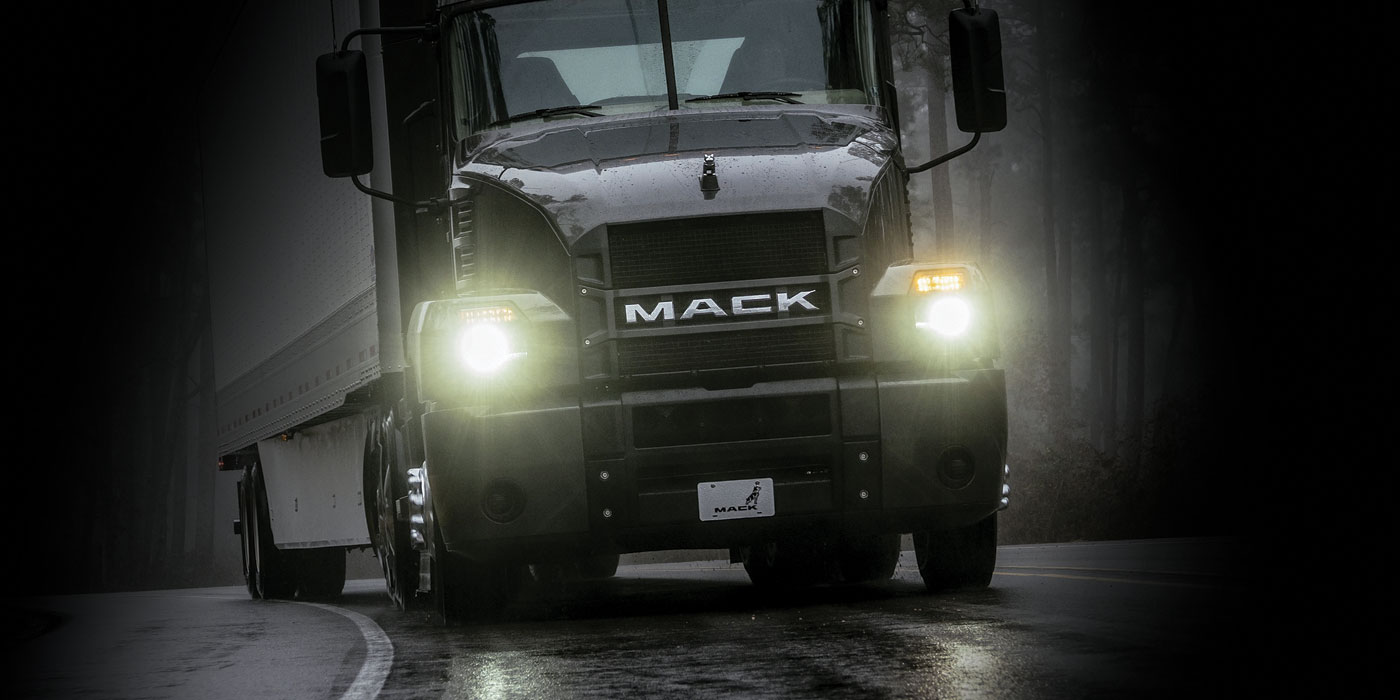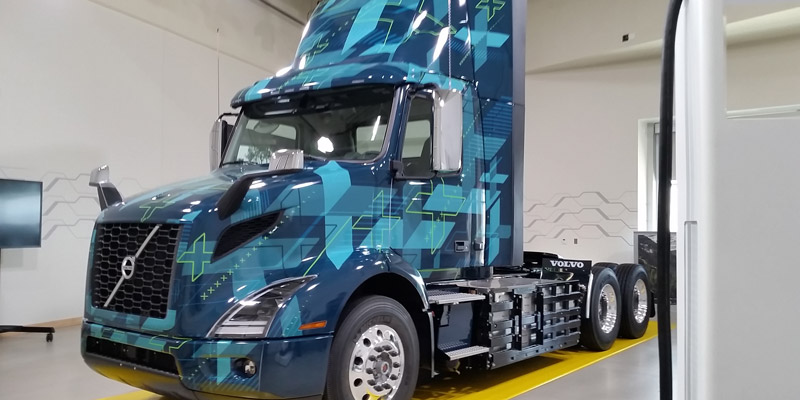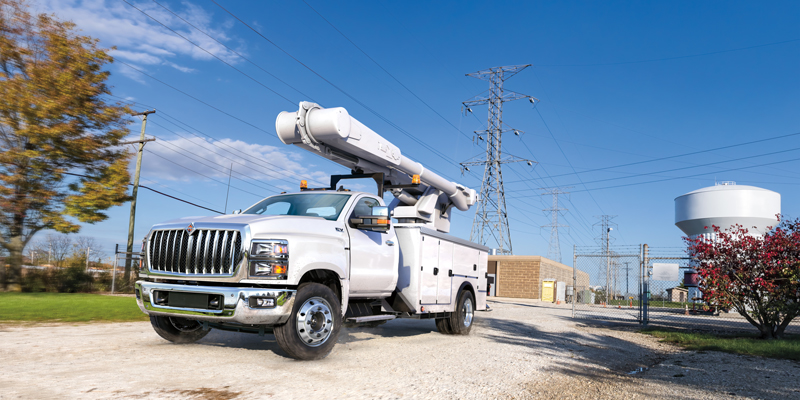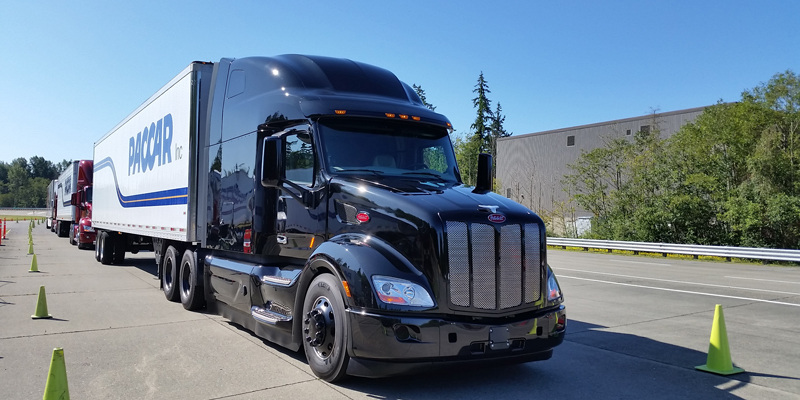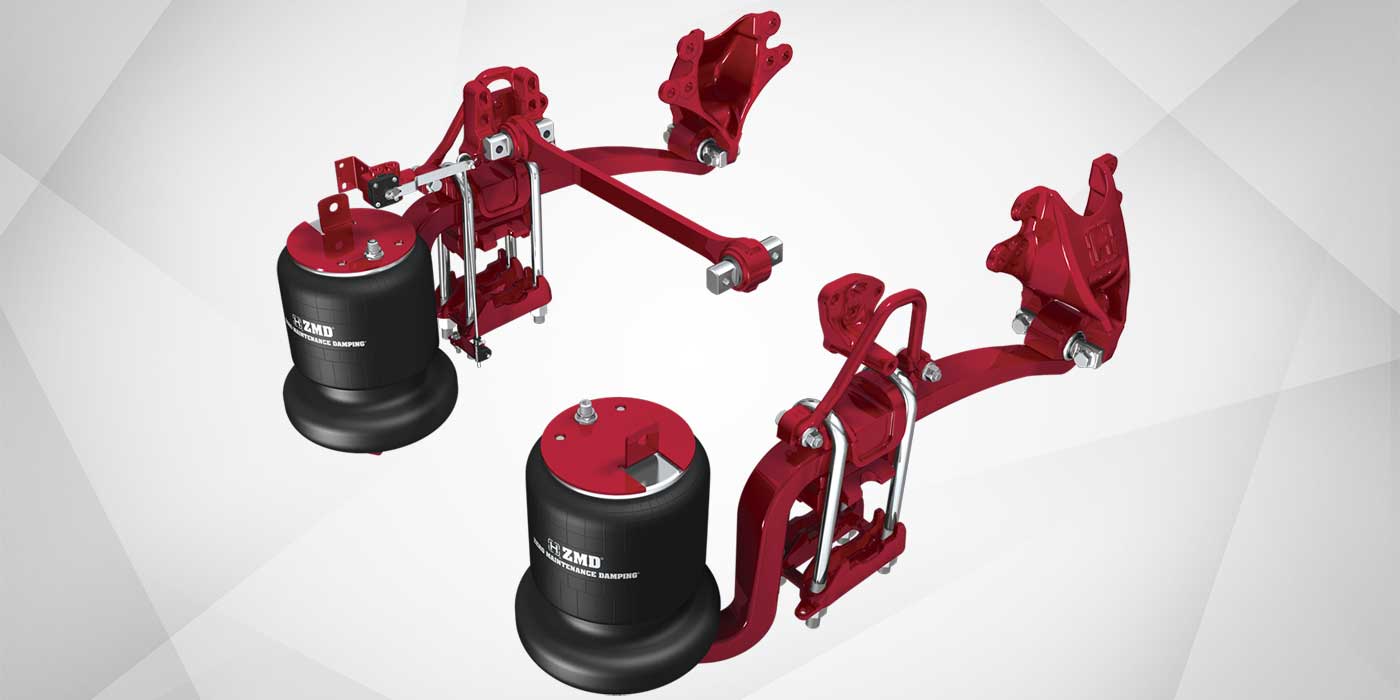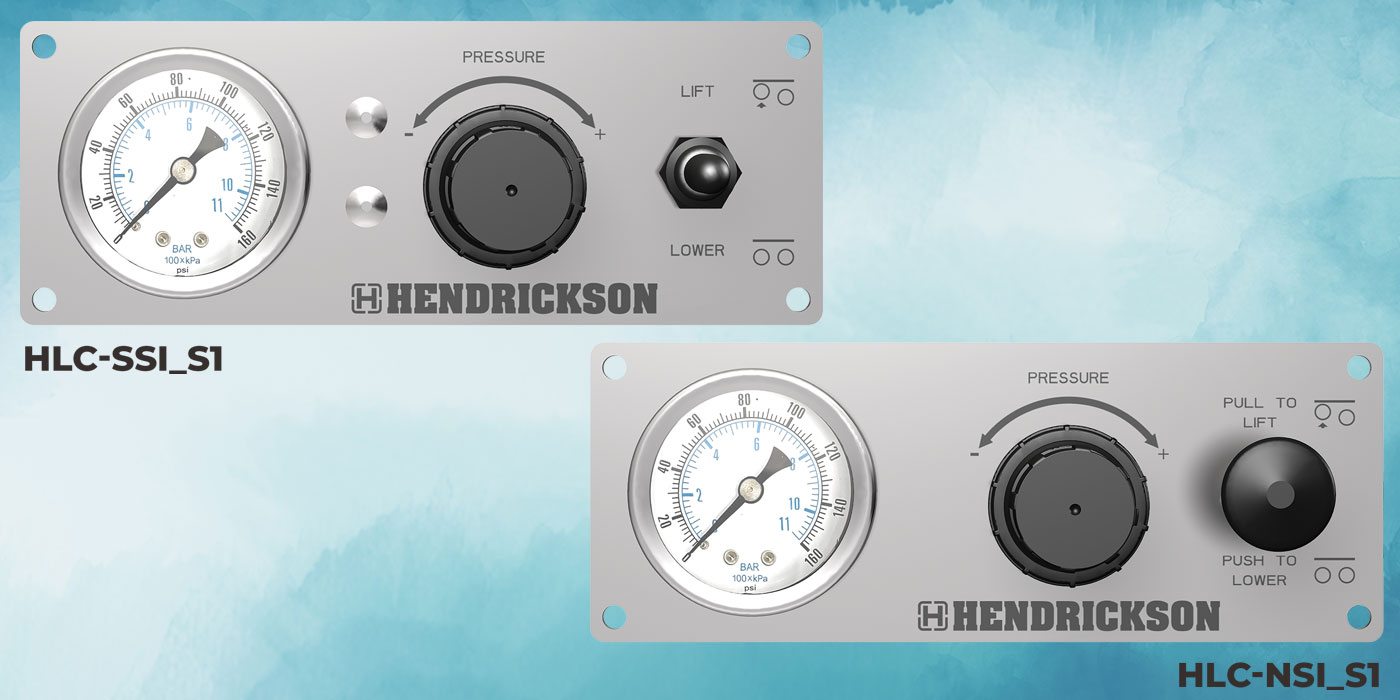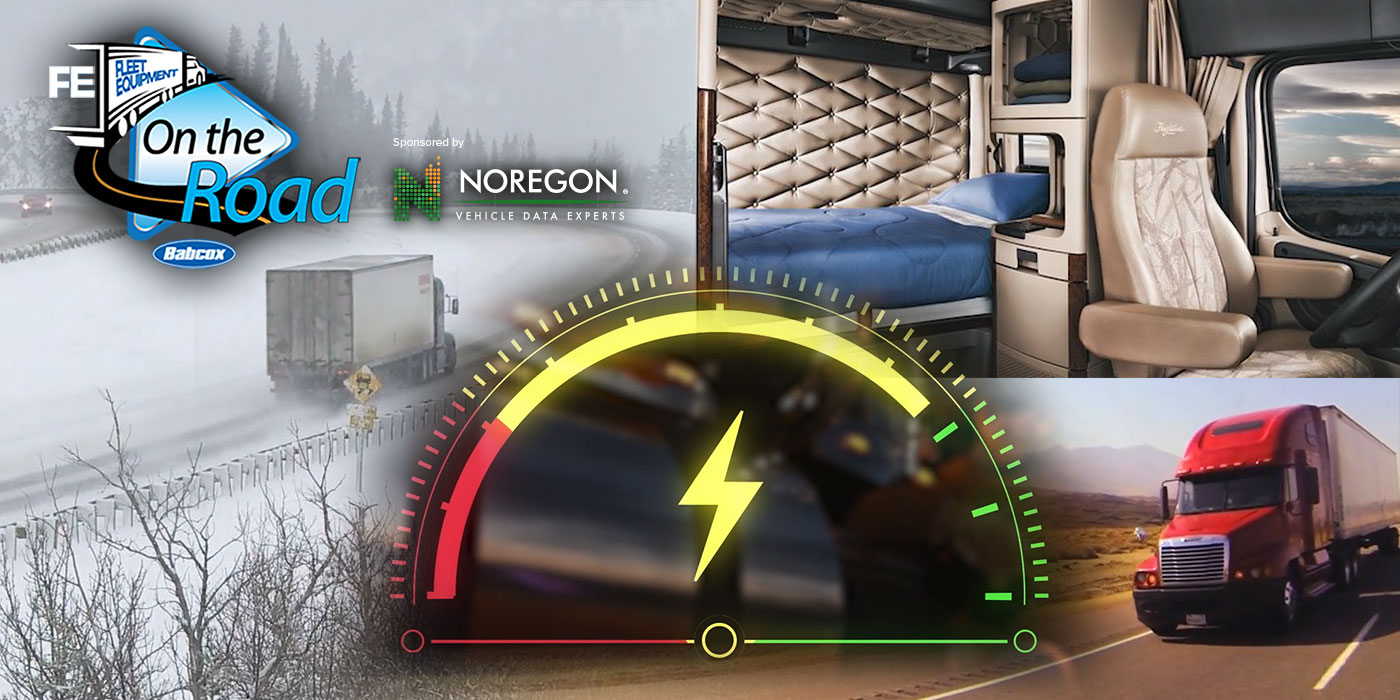
Two things that are on fleet managers’ minds pretty much every day: uptime and driver retention. Fleet managers want their trucks out on the road generating revenue as much as possible, and they want the drivers of those trucks to stick around, without having to constantly look for replacements.
Both are a real struggle for any fleet manager, and many (if not most) equipment decisions are made with these two struggles in mind. Hendrickson’s ZMD air spring is made to address both of these concerns. ZMD stands for Zero Maintenance Damping; and that phrase—”zero maintenance”—was the focus of its design.
Hendrickson began this project looking for a way to replace the shock absorber, a frequent source of downtime, while retaining its crucial role in the suspension’s mechanics. Shock absorbers, Hendrickson says, tended to wear down over time, reducing damping performance and leading to extra maintenance and roadside inspection violations. Testing began as far back as 2009, and the result was ZMD. ZMD comes standard on Hendrickson’s Ultraa-K suspension and is an option on certain Vantraax and Intraax systems.
According to Hendrickson, the way it works is that the ZMD air spring exchanges pressurized air between the bellows and piston through channels that interconnect to provide continuous suspension damping. This performs the suspension damping function that would usually be filled by the shock.
“After a few years of development testing in our research and development lab, Hendrickson dialed in an air spring design that could effectively replace the damping function of the shock,” said Don Hester, program manager for trailer commercial vehicle systems with Hendrickson. “The ZMD air spring, which has an extended warranty period over a standard air spring, has no hydraulic fluid or internal moving parts. Instead, by using pressurized air, ZMD provides consistent damping over its lifetime, unlike a hydraulic shock absorber, which loses damping capacity over time.”
But there’s another benefit to ZMD, and that’s the improved ride experienced by drivers. To hear Hendrickson tell it, the ride improvement was never intentional; it was simply a very positive byproduct of the design.
“Once we were confident in our design, we worked with our fleet partners to deploy test units into the field,” Hester said. “Nearly immediately, we received feedback from drivers that the ZMD system provided a significantly better ride over existing suspension designs. Further field trials corroborated the driver experience. Similar to the way standard air ride suspensions achieve variable spring rates via pressure adjustment through the height control valve, suspension damping is tailored to the load with ZMD air springs. By eliminating the shock absorber, which transmits forces to the trailer that can be felt by the driver, drivers report feeling less ‘back slap’ or ‘kidney punch.’”
This is especially true when the trailer is unloaded, as the air ride suspensions adjust to the reduced weight while spring suspensions do not and that difference is felt in the ride.
“The idea of eliminating a service item like shocks is exciting for fleet service managers, especially as the availability of trained technicians continues to be a challenge in our industry,” Hester said. “The investment in ZMD technology can pay dividends once the vehicle has been in service for a couple of years. The drivers, however, see and feel the value immediately. It doesn’t take long for an experienced driver who logs hundreds of miles operating an 80,000-lb. vehicle to appreciate ZMD’s ride.”
When you think of equipment that helps retain drivers, creature comforts immediately come to mind, but don’t overlook the operational benefits of hard-working components such as axles and suspensions. In the case of the ZMD, it’s an example of how equipment manufacturers aim to prove out both the ROI of the equipment itself and the value it holds for the driver, which is something that can be hard to determine, as it’s often an either/or proposition. But why choose one or the other when you can have both?
Check out the rest of the July digital edition of Fleet Equipment here.


